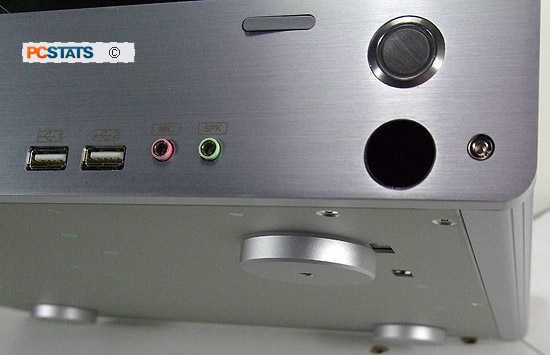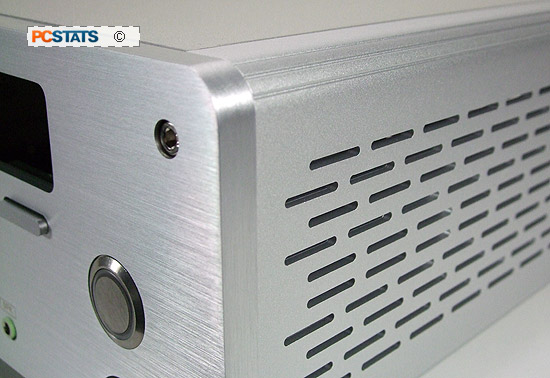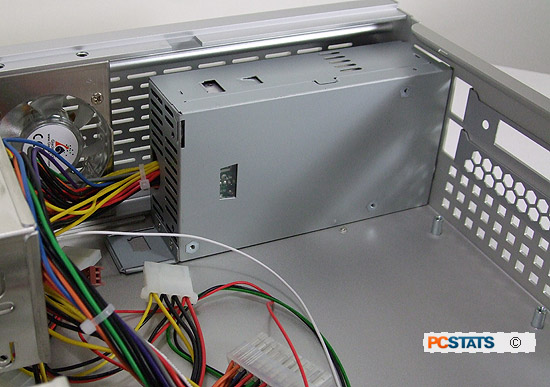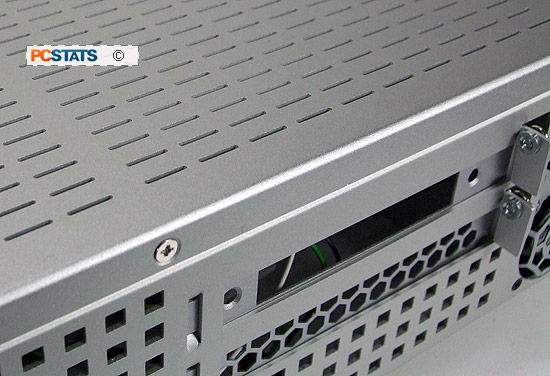There are four aluminum feet on the bottom of the case,
it would have been nice if GlacialTech could put some rubber bottoms on the feet
so the system does not transfer vibrations to the other electronic devices or
table. If you put something on top of the Altair A380, make sure you're not
blocking the air vents! If possible place this case on the top of the totem
pole.
|

The case's aluminum
feet do reduce system vibration, although rubber 'shoes' would have
improved the dampening. |
|

The outer case is made out of
brushed aluminum. |
The Glacialtech Altair A380 feels like a high-quality case - the rounded
aluminum siding feels much more solid than the panels used on a generic desktop case.
There's not much to the rear of the GlacialTech Altair A380. There's a spot for the motherboard's rear I/O the two horizontal riser expansion slots and the power supply. The 270W PSU is made from Enhance and it natively supports a 20 pin main
ATX power connector. Good thing all motherboards are still compatible with the
old ATX 1.4 spec power supplies. The main cable is also a little short so make
sure the PSU can reach before you leave the shop!
|

The miniature 270W
power supply provides more than enough juice to power a low-wattage
processor and motherboard
|
The power supply has a total of five molex, one floppy
and a four pin ATX12V connector. Make no mistake, this system is not designed as
a high end gaming system so high powered videocards are a no no with the
GlacialTech Altair A380. Pick a motherboard with integrated video and HDMI
output like this
baby.
|

The Aluminum is
punched with lots of vents to give the 380 Altair case good cooling. Shown
here is the special PCI bracket for the
infrared card.
|
Inside the GlacialTech Altair A380, comes next.
